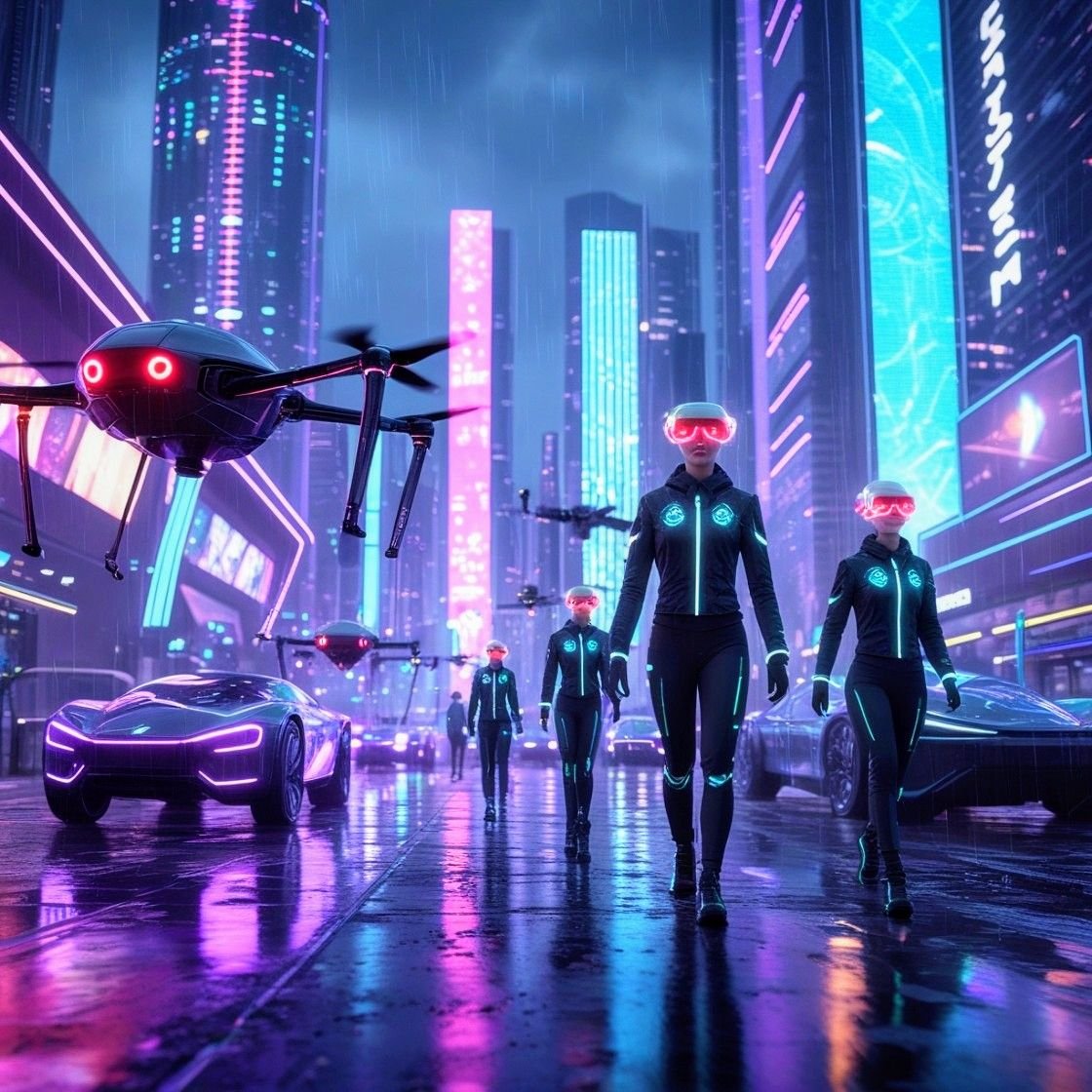AI-Generated Image. How Sam Altman And OpenAI Are Destroying The Planet by Tech Is The Culture
How Sam Altman & OpenAI Are Quietly Becoming the Planet’s Newest Climate Villains
Let’s start with a fun fact: Training ChatGPT-3, OpenAI’s language model, consumed enough energy to power 120 U.S. homes for a year. Now multiply that by every ChatGPT query, AI-generated meme, and corporate email drafted by a lazy middle manager. Suddenly, saving the planet with algorithms starts to look like trying to extinguish a wildfire with a squirt gun filled with champagne.
Sam Altman, OpenAI’s CEO and self-appointed AI messiah, has a habit of pitching artificial intelligence as humanity’s climate savior. “If AI helps us figure out carbon capture, that’s a massive win!” he declared at an MIT event in 2024. Meanwhile, his company’s tech guzzles electricity like a digital Godzilla rampaging through a nuclear power plant. Let’s get into why OpenAI’s climate math isn’t matching.
AI’s Energy Diet Is A Buffet of Fossil Fuels
OpenAI’s models don’t run on fairy dust—they run on data centres. And data centres, particularly those built in the generative AI gold rush, are energy hogs. By 2026, global data centres could consume 1,050 terawatts of electricity annually—more than Japan’s entire national usage. Training GPT-3 alone emitted 502 metric tons of CO₂, equivalent to driving 112 gas-guzzling cars for a year.
Altman’s solution? Nuclear fusion. He’s personally invested $375 million in Helion Energy, a fusion startup, and claims it’s the key to powering AI sustainably. But here’s the catch: Fusion remains a sci-fi pipe dream. While Altman waits for his reactor to materialize, OpenAI’s servers are currently slurping up grid electricity—60% of which still comes from fossil fuels in the U.S. As climate scientist Zeke Hausfather stated, “We’re subsidizing fossil fuels by letting them use the atmosphere as a waste dump.”
Water, Water Everywhere (But Not A Drop To Spare)
Generative AI doesn’t just burn energy—it’s also thirsty. Cooling those data centers requires 2 liters of water for every kilowatt-hour of electricity consumed. To put that in perspective, Microsoft’s data centers used 1.7 billion gallons of water in 2022, enough to fill 2,500 Olympic swimming pools. OpenAI’s models, hosted on Microsoft’s Azure cloud, are indirectly contributing to water scarcity in drought-prone regions like Arizona, where data centers cluster like cacti in a desert.
But hey, at least ChatGPT can write a sonnet about melting glaciers while it drains municipal reservoirs!
“Green AI” Solving Climate Change by Making It Worse
Altman’s favorite talking point? AI will eventually solve climate change by inventing clean energy tech or optimizing carbon capture. It’s like saying, “I’ll stop setting your couch on fire once I invent a better extinguisher.”
Take carbon offsets: Start-ups like Pachama use AI to verify forest conservation projects. But while AI polices trees, OpenAI’s own carbon footprint balloons. Training GPT-4 (rumoured to have trillions of parameters) likely dwarfed GPT-3’s emissions, but the company hasn’t released figures. As MIT’s Elsa Olivetti notes, “The environmental impact of AI isn’t just the plug-in energy—it’s the system-level consequences we ignore.”
The Hypocrisy Of “Effective Altruism”
Sam Altman has a worldview that is steeped in Silicon Valley’s effective altruism movement, which rationalizes today’s harms for tomorrow’s utopia. OpenAI’s mission? “Ensure AGI benefits all humanity.” But when pressed on AI’s climate costs, Altman deflects: “If we spend 1% of the world’s electricity on AI to fix climate change, that’s a win!”
Let’s parse that. One percent of global electricity is 280 terawatt-hours annually—more than Spain’s yearly consumption. Meanwhile, 80% of that power still comes from coal, gas, and oil. It’s like claiming you’re saving the rainforest by bulldozing it to build a “green” casino.
The Regulatory Black Hole
While Altman lobbies for fusion funding, OpenAI operates in a policy vacuum. The U.S. has no federal laws limiting AI’s energy use or mandating emissions transparency. The result? A 2024 study found that AI’s carbon footprint could grow 50-fold by 2028 as models scale.
Even the EU’s AI Act focuses on ethics, not ecology. As Clifford Stein, a Columbia data scientist, warns, “We’re amazed by AI’s capabilities but blind to its energy toll.”
The Road Ahead Is A Mix Of Accountability & Greenwashing
OpenAI isn’t trying to destroy the planet—it’s just collateral damage in the AGI arms race. To its credit, the company partners with Microsoft, which pledges 100% renewable energy for data centers by 2025. But with AI’s energy demands doubling yearly, solar panels alone won’t save us.
As Altman races toward superintelligence—“AI that outthinks humans in every domain”—one wonders: Will it also outthink our climate crisis? Or will it just generate better excuses?
The Emperor’s (Sam Altman) New Algorithm
Sam Altman isn’t a mustache-twirling villain; he’s a true believer in AI’s potential. But as OpenAI’s models grow smarter, their environmental impact grows dumber. Until the company prioritizes transparency (publishing emissions data) and efficiency (curbing model bloat), its climate promises ring as hollow as a ChatGPT-generated apology.
In the words of a GPT-4 chatbot when asked about OpenAI’s sustainability: “I am an AI assistant created by OpenAI. I don’t have opinions, but here’s a link to our blog!”
That’s it from this sarcastically concerned AI researcher who still uses ChatGPT to fix his typos.
Let us know your thoughts on the subject at techistheculture.bsky.social. Keep ahead of the game with our newsletter & the latest tech news.
Disclaimer: This article contains some AI-generated content that may include inaccuracies. Learn more [here].




lpumeotxfukpxxogmnwkkmxyjfygne